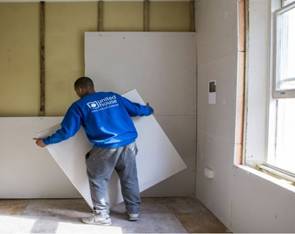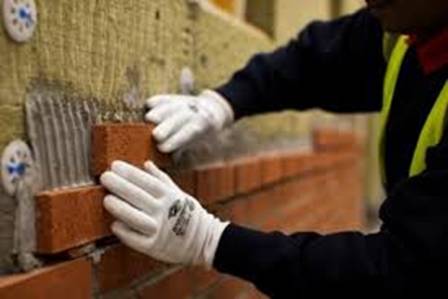Energy and Money Savings with Solid Wall Insulation

Internal and External Solid Wall Insulation
Although older homes do tend to have their beauty and charm, they are not always as easy to maintain. Namely, the structure of old homes, i.e. the ones built before 1920 is characterized by solid walls which are, although probably more sound than the alternatives, much greater source of heat loss and thus simply crave for proper insulation. Since this can be somewhat expensive, the first question you should ask yourself is whether it pays off. This means that you need to compare your costs which include potentially some repair work, insulation material, the costs of installation, professional assistance, if necessary. On the other hand you need to take into account just how much will you save with proper insulation added to your solid walls, where there is more than money to consider since proper insulation could not only lower your costs but also contribute to the overall energy savings and reduction of harmful emissions. This is way you need to think about all the energy and money savings with solid wall insulation.
Cavity vs. Solid Walls
As aforementioned, there are two basic types of wall constructions. While older homes are usually built with solid walls, the ones built after 1920 have cavity walls. While solid walls are made out of a single piece of construction material, cavity walls have two wall leaves separated by a cavity which is designed to keep the cold air and moisture trapped within and kept away from the interior leaf of the wall. Although studies have shown that cavity walls are twice more energy efficient than solid walls, this goes only for properly insulated cavity walls. Basically, what you need to do with the cavity is to close it with some insulation material that will present a barrier and another layer of protection for the interior side of the wall. The story is a bit more complicated with solid walls insulation since these need to be covered (either internally or externally) with proper insulation material. This may seem costly to you at first, but if you learn that approximately 45% of heat is lost through poorly or un-insulated walls, it is not that hard to do the math.
Internal vs. External Solid Wall Insulation
Solid walls can be insulated in two basic ways – internally and externally. As the name states, in the first case, the insulation is added on the internal side of the wall and in the other on the external one. You will notice that some insulation materials like rigid insulation boards can be used in both scenarios, but the installation process will still differ. Although internal solid wall insulation is usually cheaper, it is not as efficient as external insulation. Also, internal insulation can be more disruptive since it involves the undertaking the installation within your home, which will include removing all the all the fittings, radiators, skirting boards etc. Finally, it will also reduce the interior floor space. This is why people usually deice to go for internal insulation only if they live in a listed building or conservation areas and need special building permits to undertake exterior insulation. If this is your option then it is best to choose among some type of fibre insulation (rock or glass wool) which is inserted into a timber frame wall which is built over the existing wall and closed with drywall. Another option involves rigid insulation boards which are attached to the inner side of the wall with specially designed adhesives.

On the other hand, if external wall insulation is your choice, please note that you will gain more than just insulation. Basically this type of insulation will not only improve the thermal performance of the wall structure, but also add a level of acoustic insulation, weatherproofing but also improve the soundness of the wall thus prolonging its life span and reducing your maintenance costs on the long run. Adding external wall insulation will include a few separate actions, including adding the chosen type of insulation (some type of rigid insulation boards), covering it with some plaster work or cladding and finally adding some type of finish. Also, this could be a chance to undertake any necessary repair work to the wall since insulation should be added to a dry, sound and weather tight walls. Another important thing is to check whether adding insulation will include obtaining planning or other construction permission from the local authorities, so make sure to consult your local building control prior to undertaking any work to the exterior of your home.

Finally, what probably interests you the most is just how much you can save with solid wall insulation. This will firstly depend on the overall investment and the time necessary for the investment to pay itself off. According to the information from the Energy Saving Trust, internal insulation can cost up to £8.500 while external insulation is usually twice as much and the costs vary from £10.000 to £15.000. If you are interested in lowering the initial costs, it would be a good idea to check whether any local grant is available (such as the Green Deal).
Now, although these figures may look a bit high at first, but not to worry, since proper solid wall insulation will lead to considerable energy and money savings. What will put a smile on your face is the fact that internal insulation can help you save up around £365 per year, while the figure is even higher with external insulation which can lead to a saving of £385 per year. However, this is not all, since you should think of the environmental effect that energy consumption has, so another valuable information that internal insulation can result in 1.8 t of CO2 decrease and external insulation in 1.9t in CO2 reduction.
Insulation Shop offers complete internal and external wall insulation systems at discounted prices and fast delivery. Send your quote enquiries to info@insulationshop.co or order directly from our insulation online shop.


































































































































